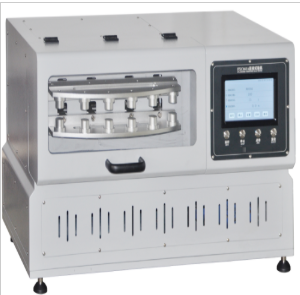Several common methods for testing the combustion properties of textiles
FAQ 3 6 月, 2025
1. The combustion properties of textiles:
The combustion of textiles is a complex process. Their flammability in addition to the chemical composition of the fibers but also with the fabric structure and fabric dyes and other substances on the nature of the relevant. For ordinary taking textiles, the performance of the material itself is the determining factor of its combustion characteristics. Fiber by combustion properties are generally divided into:
(1) non-combustible: glass fibers, asbestos, steel fibers, etc..
(2) Refractory: polyvinyl chloride, polyacrylonitrile, etc.
(3) combustible: wool, silk, polyester, nylon, etc.
(4) flammability: cellulose fibers (such as cotton, viscose, etc.), nitrocellulose
high-performance fire-resistant and flame-resistant fibers for the preparation of protective clothing, for combustible or flammable fibers woven into the textile is required to carry out flame-retardant finishing. Flame-retardant finishing is a textile for certain chemical treatment, so that it is not easy to burn when exposed to fire, or a fire that is extinguished treatment.
2. Textile flame retardant finishing:
textile flame retardant mechanisms are the following:
(1) Covering theory: certain flame retardants at higher temperatures (> 500 ℃), can form a covering layer on the surface of the fibers, and
has the role of insulation, in addition to impeding the supply of oxygen, but also to prevent flammable gases from diffusing outward, so as to achieve the purpose of flame retardant. Such as borax-boric acid.
(2) gas theory: flame retardant at the temperature of combustion, decomposition of non-combustible gases such as CO2. HCl, H2O, etc., the concentration of combustible gases will be diluted to the concentration of flame can be produced below.
(3) Thermal theory: Viewpoint 1: flame retardants at high temperatures undergo heat-absorbing changes such as melting and sublimation, which has the effect of preventing the spread of combustion; Viewpoint 2: flame retardants can make the fiber rapidly dissipate heat, so that the fabric does not reach the temperature of combustion.
(4) catalytic dehydration theory: the presence of flame retardants, changing the thermal cracking mechanism of the fiber, so that the fiber before the cracking temperature and a large number of dehydration or cross-linking, so that the amount of combustible gases and volatile liquids is greatly reduced, while the amount of solid carbon is greatly increased, so that the flaming combustion will be inhibited.
Corresponding to the corresponding flame retardant mechanism, flame retardant finishing has three ways:
(1) Exhaustive flame retardant method: the flame retardant and cellulose fibers are combined with ionic or covalent bonds, so that they do not dissolve in the fiber and obtain durable flame retardant effect.
(2) In-situ method: the flame retardant is directly added to the spinning liquid.
(3) Copolymerization method: the flame retardant is added into the polymer chain segment, so that the fabric has qualified fastness to washing, bleaching and sweat stains, and is not absorbed by the skin.
Printing and dyeing factories mainly use the kind of method.
3. Textile flame retardant performance test
The textile flame retardant test has the following kinds:
(1) textile combustion performance test: divided into vertical, horizontal, 45 degrees combustion test method.
(2) Limit oxygen index test.
(3) Flame retardant washing resistance test
For flame retardant fabrics, we also need to test its breaking strength and tearing strength according to the standard.


